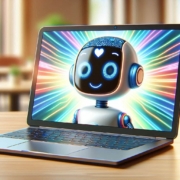According to the U.S. Bureau of Labor Statistics, as of 2021 there are five generations of workers: Traditionalists, also known as The Silent Generation (born before 1946), Baby Boomers (born between 1946 and 1964), Generation X (born between 1965 and 1980), Millennials (born between 1981 and 1996), and Generation Z (born after 1996).
This generational diversity can bring benefits to organizations, such as increased creativity, innovation, and productivity. However, it can also pose some unique challenges for employers and managers who need to manage and motivate a multigenerational workforce and it could take some time to overcome them.
Communication Styles
One of the most obvious challenges of having a multigenerational workforce is the difference in communication styles. Each generation has its own preferences and habits for communicating, both verbally and non-verbally. For example, Traditionalists and Baby Boomers tend to favor formal and face-to-face communication, while Generation X and Millennials prefer informal and digital communication, such as email, text, or social media. Generation Z, the newest generation in the workforce, is even more tech-savvy and accustomed to using multiple platforms and devices for communication.
Managers need to be aware of the communication preferences of each generation and adapt accordingly. They also need to foster a culture of respect and openness, where employees can express their opinions and feedback without fear of judgment or ridicule. Moreover, managers need to encourage cross-generational communication and collaboration, by creating opportunities for employees to interact and learn from each other, such as mentoring programs, team projects, or social events.
Technological Adaptation
Another challenge that stems from having a multigenerational workforce is the difference in technological adaptation. Technology plays a vital role in the modern workplace, as it enables faster, easier, and more efficient processes and outcomes. However, not all generations are equally comfortable with using and learning technology. Younger generations are more adept at embracing and adopting modern technologies, while older generations may struggle or resist them.
To overcome this challenge, managers need to provide adequate training and support for employees who need to learn new technologies. They also need to explain the benefits and rationale behind the introduction of new technologies, and how they can enhance the work experience and performance of employees. Furthermore, managers need to leverage the strengths and skills of each generation, by assigning tasks and roles that match their technological capabilities and preferences.
Workplace Expectations
A third challenge that arises from having a multigenerational workforce is the difference in workplace expectations. Each generation has its own expectations and values regarding work-life balance, job stability, career progression, and organizational loyalty.
Traditionalists and Baby Boomers tend to value job security, long-term commitment, and hierarchical structures, while Generation X and Millennials tend to value flexibility, autonomy, and horizontal structures. Generation Z, the youngest generation in the workforce, tends to value purpose-driven work, diversity, and social responsibility.
To overcome this challenge, managers need to understand the expectations and values of each generation and align them with the organizational goals and vision. They also need to provide a variety of rewards and incentives that appeal to different generations, such as financial compensation, recognition, feedback, development opportunities, or work-life balance options. Additionally, managers need to create a culture of trust and transparency, where employees can voice their concerns and expectations and feel valued and respected.
Motivational Factors
A fourth challenge that emerges from having a multigenerational workforce is the difference in motivational factors. Each generation has its own sources of motivation and engagement at work, which can influence their performance and satisfaction.
Traditionalists and Baby Boomers tend to be motivated by duty, respect, and achievement, while Generation X and Millennials tend to be motivated by challenge, feedback, and growth. Generation Z, the most recent generation in the workforce, tends to be motivated by impact, meaning, and social good.
To overcome this challenge, managers need to identify the motivational factors of each generation and tailor their leadership style accordingly. They also need to provide a clear and compelling vision and mission for the organization and show how each employee contributes to it. Moreover, managers need to empower and involve employees in decision-making and problem-solving, and
Having five generations in the workforce presents unique challenges for employers and managers. Here are some of the key challenges:
- Communication Styles: Each generation has its preferred methods of communication, from traditional face-to-face interactions to digital messaging. Balancing these preferences can be tricky.
- Technological Adaptation: Younger generations are typically more comfortable with rapidly changing technology, while older generations may prefer traditional methods. Integrating new technologies in a way that works for everyone requires careful planning.
- Workplace Expectations: Different generations have varying expectations regarding work-life balance, job stability, and career progression. Aligning these expectations with organizational goals is a complex task.
- Motivational Factors: What motivates employees can differ significantly across generations. For example, some may value job security, while others prioritize flexibility or purpose-driven work.
- Resistance to Change: Change can be met with resistance, especially if it affects personal lives. Understanding and managing this resistance is crucial for successful organizational change.
- Diversity and Inclusion: Embracing generational diversity and creating an inclusive environment is essential. It involves recognizing and valuing the unique contributions of each age group.
- Succession Planning: With a wide age range, succession planning becomes more critical. Organizations must consider all age groups to ensure a smooth transition and continuity.
- Learning and Mentoring: There are opportunities for cross-generational learning and mentoring, but facilitating these relationships effectively can be challenging.
- Managing Conflict: Different life experiences influence how individuals handle conflict. A multigenerational workforce may require varied approaches to conflict resolution.
- Employers who successfully navigate these challenges can harness the strengths of a diverse workforce, leading to increased innovation, productivity, and employee satisfaction [1] [2].
Sources:
1. Generational Differences in the Workplace [Infographic]
2. Multigenerational Workforce: Benefits, Challenges, and 9 Best … – AIHR
3. Bridging Generational Divides in Your Workplace – Harvard Business Review


